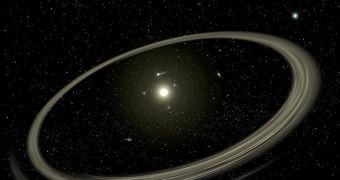An international group of investigators recently announced that the value for the half-life of samarium-146, previously thought to be 103 million years, is in fact 68 million years. The new number is very important, since 146Sm is heavily used in a number of dating methods.
The actual value for the element's half-life is around 34 percent smaller than the previous one, and this has the potential to change our current understanding of processes that led to the development of the solar system.
The data could also change how we see a series of geological events that are known to have occurred in Earth's mantle, as well as on Mercury, Venus and Mars. 146Sm dating was used to determine when these processes occurred during the early solar system.
Five scientists from the University of Notre Dame were also a part of the international collaboration. They explain that samarium-146 is one of the most important tools for understanding what went on in the solar system during the first few hundred million years of its existence, Daily Galaxy reports.
This radioactive atom largely acts like a clock. Experts were able to develop a method of using it to figure out when the mantles of rocky, terrestrial planets separated from the crust. Knowing this is very important for understanding how these four worlds and their moons evolved.
The atom is produced exclusively at the core of stars, and does not occur naturally on Earth or any other planet. Its natural tendency is to decay into a more stable element, neodymium-142 (142Nd). Whenever high amounts of 142Nd are found in the ground, it means that 146Sm was once there.
“Samarium-146 has a whole number of different applications that are specific to geological dating of these events. It goes back to the formation of the Solar System and the formation of Earth,” said UND physics professor Philippe Collon.
“That clearly changes some of the models and is an important piece of information. It is going to have implications on some of the models we have and our understanding of the formation of the Solar System and any extraterrestrial planetary system we are looking at,” the expert added.
A nuclear reactor was used to produce a few 146Sm samples for this research. The compound was analyzed at the ATLAS accelerator facility, which is located at the DOE Argonne National Laboratory.

 14 DAY TRIAL //
14 DAY TRIAL //